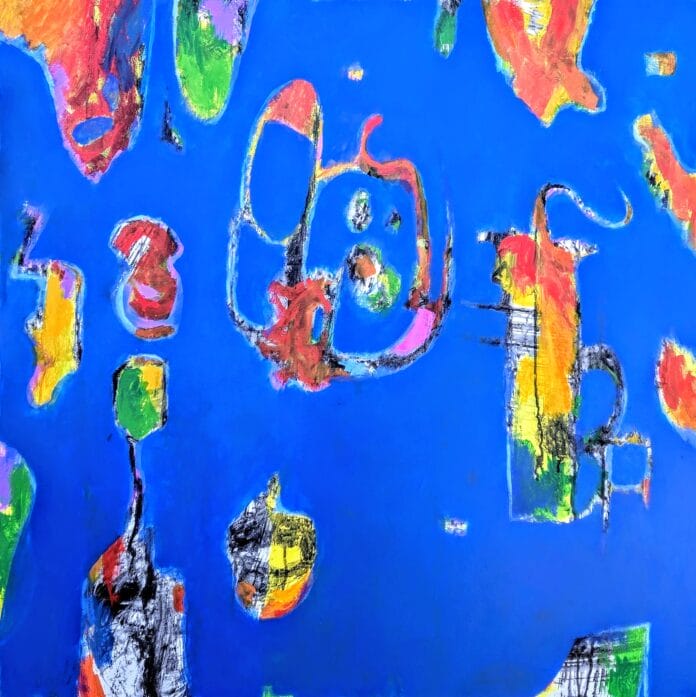Kassem Amoudi’s paintings do not shout—they resonate. Rooted in deep introspection and a lifelong pursuit of beauty, his abstract works unfold like meditations, guiding viewers beyond surface form and into a realm where the seen meets the sensed. With an educational pedigree that spans the Pennsylvania Academy of the Fine Arts (PAFA) and The Barnes Foundation, and teaching positions at respected institutions across Pennsylvania, Amoudi is both a creator and cultivator of artistic insight.
A Respected Educator and Mentor
Kassem Amoudi serves on the faculty of several esteemed institutions, including the Pennsylvania Academy of the Fine Arts, the Woodmere Art Museum, the Wayne Art Center, and the Perkins Center for the Arts. Across these centers of learning, he is recognized not just for his technical mastery but for the philosophical depth he brings to both teaching and artistic practice. His mentorship often goes beyond the brush—inviting students to examine their relationship with form, color, space, and themselves.
Amoudi’s academic journey has deeply informed his artistic voice. He earned his Master of Fine Arts from the Pennsylvania Academy of the Fine Arts in Philadelphia, completed the Post-Baccalaureate Program in Painting at PAFA, and undertook the Seminar in Advanced Theoretical and Critical Studies in the Fine Arts (I & II) at The Barnes Foundation. This foundation in both practice and theory has enabled him to navigate—and teach—the intricate terrain between thought and intuition in contemporary abstraction.
Exhibited Nationally and Internationally
Amoudi’s work has been exhibited in a wide range of galleries and museums, both in the United States and abroad. His paintings, which often straddle the emotional and the architectural, have found resonance with a diverse array of audiences. Notably, the Woodmere Art Museum has recognized the significance of his work by adding two of his paintings to their permanent collection in recent years. This is a rare and meaningful honor that reflects the museum’s commitment to contemporary voices that elevate the language of abstraction.
The Philosophy Behind the Paint
Amoudi’s approach to abstraction is both poetic and profound. “My abstractions are a continuous journey in the search for beauty in its original form,” he explains. This pursuit is not about creating pleasing aesthetics but rather uncovering an essence that lies somewhere between presence and absence—between what we see and what we feel.
He often draws a parallel between visual art and music, remarking, “It is not the notes which make the music. It is the pauses between them.” This sentiment is central to how he composes his paintings: in the tension and harmony between opposites. Each piece is an exploration of the balance between form and formlessness, between the dynamic and the static, and between busyness and calm. The result is work that invites not only observation but contemplation.
A Conversation With the Canvas
For Amoudi, the act of painting is less about control and more about dialogue. He does not approach the canvas with a rigid agenda but allows the process to unfold through what he calls “two-way communication.” This openness allows for a kind of spiritual honesty in his work—each painting becomes its own entity, with its own history, emotions, and needs.
“Each of my paintings has a story and a history of its own,” he says. “I treat them as beings that have their own feelings and needs.” This deeply empathetic relationship with his work underscores his belief that art is not something to be imposed upon a surface, but something to be discovered within it.
Painting as Discovery
Amoudi describes painting as a “continuous adventure and discovery.” He begins many of his works with layers of black and white, creating a foundation of contrasts. Over time, he builds upon these foundations with color, adjusting, editing, and composing until a dominant hue emerges to lead the visual experience.
One of his recent works, Sea Change—a 40×30 acrylic on canvas—embodies this process. “You can see black and white underneath, then colors, and then composing and editing with a dominant color,” he notes. In this case, that dominant color is blue. The result is not merely a seascape or a metaphor—it is an emotional tide made visual, a moment of quiet transformation caught in motion.
Beyond the Mirror of Reality
Amoudi speaks often of “the source and its reflection in the mirror of reality.” His paintings live in that liminal space—in the blurred edge between what is and what could be. To engage with one of his works is to pause at that edge and consider the unspoken.
It’s this metaphysical undercurrent that gives his abstraction a depth that goes beyond formalism. He’s not just abstracting for abstraction’s sake; he’s distilling something essential, something universal. As such, his work is not only seen but felt—an echo of something just beyond the reach of language.
Conclusion: A Living Legacy in Abstraction
Kassem Amoudi stands as a powerful voice in the field of contemporary abstraction. As both an artist and educator, he continues to inspire a deeper way of seeing—not just of canvas, but of self and surroundings. His work invites us to slow down, to listen to the silence between strokes, and to glimpse, if only for a moment, the beauty that lies between the source and its reflection.


